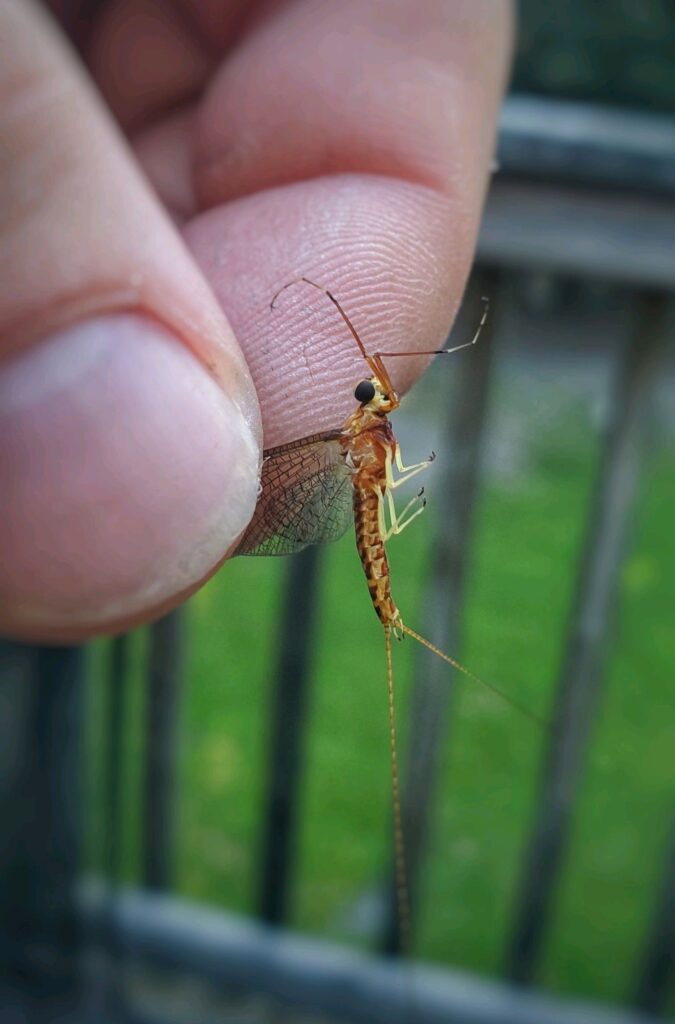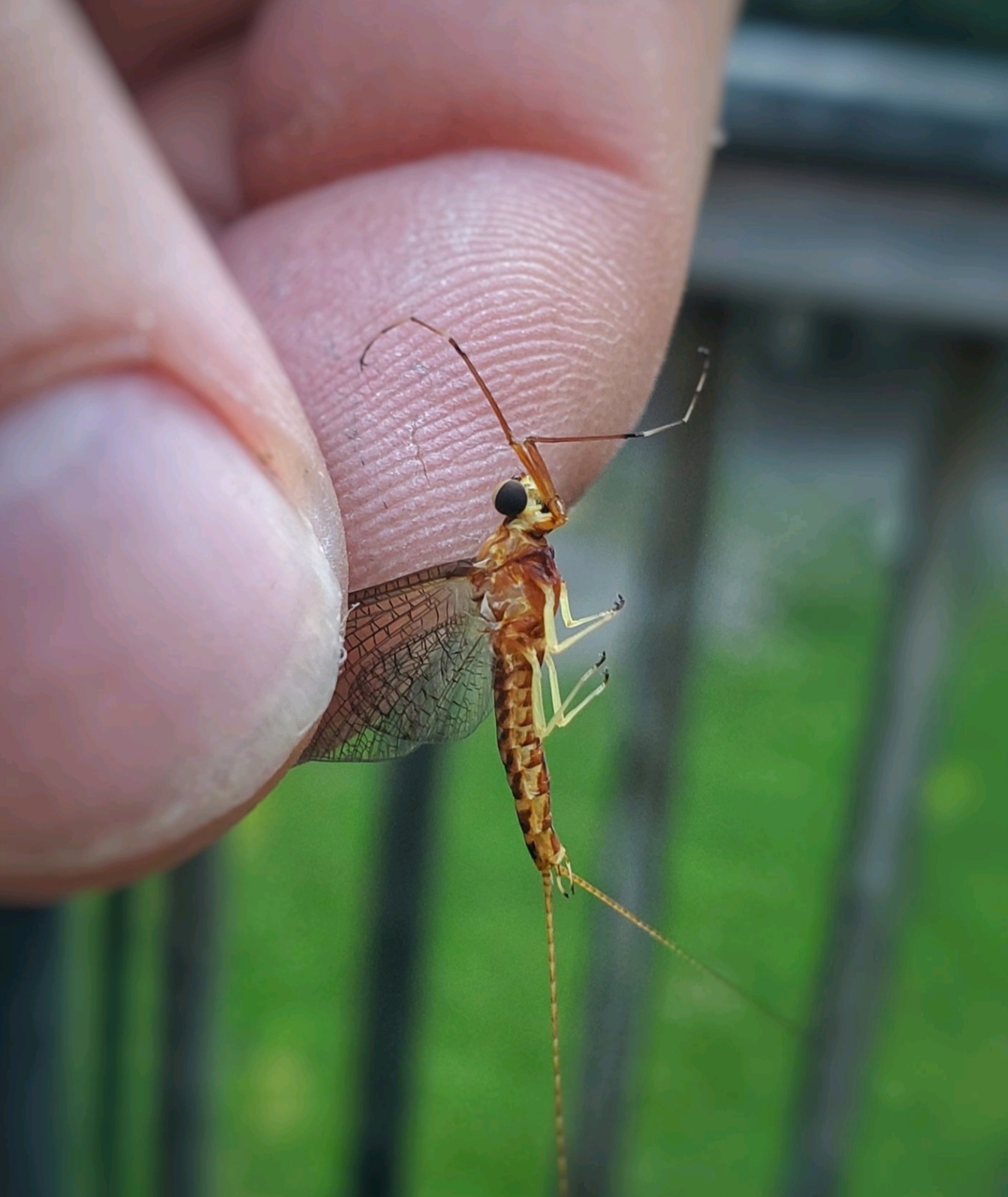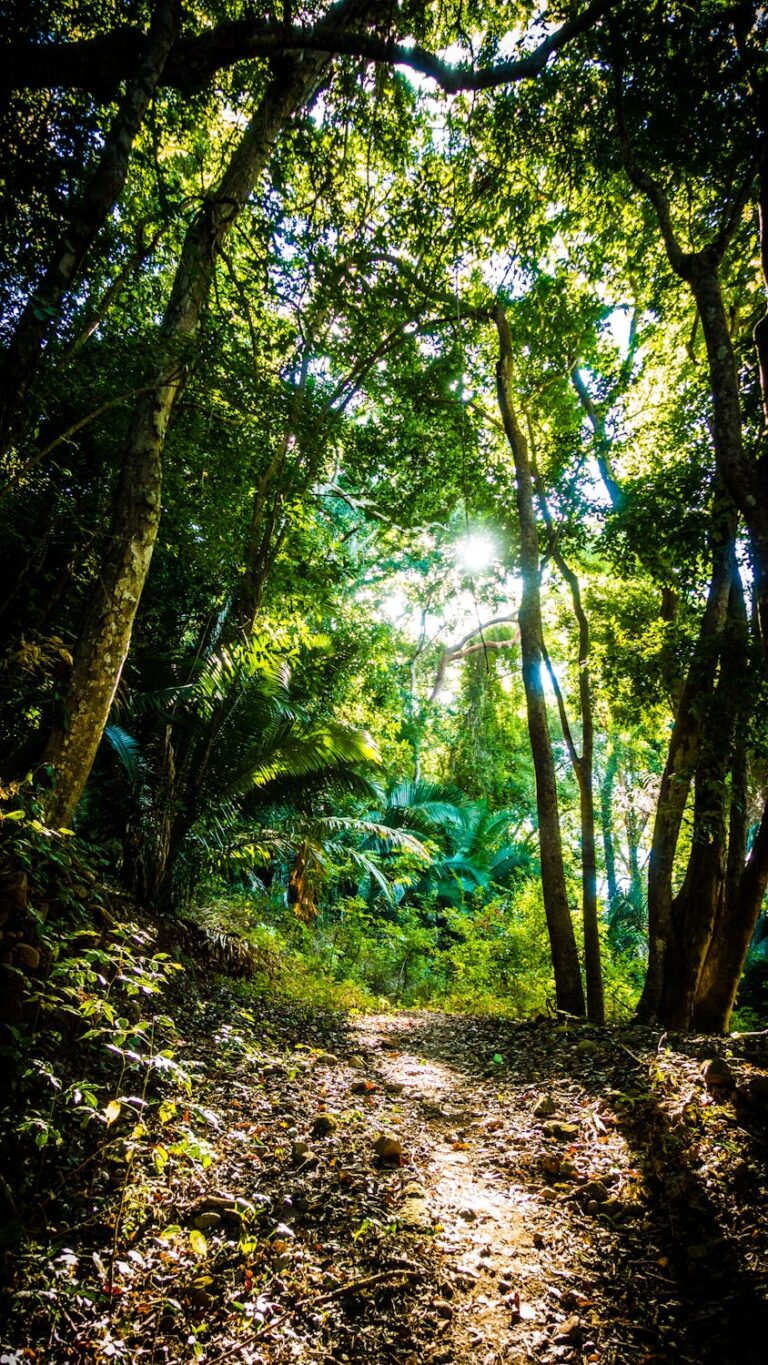The Mayfly

Hexagenia limbata, commonly known as the giant mayfly, is a species native to North America and is found in various freshwater habitats, including lakes, ponds, and slow-moving rivers. These large insects are completely harmless to humans but are sometimes mistaken for large mosquitoes. The Westport area of Massachusetts, with its diverse freshwater ecosystems, serves as a suitable habitat for these fascinating insects.
Habitat and Behavior:
Hexagenia limbata typically inhabit areas with sandy or muddy bottoms, where they spend the majority of their life cycle as aquatic nymphs. These nymphs play a crucial role in freshwater ecosystems as they are detritivores, feeding on decaying organic matter, algae, and other small aquatic organisms.
During their nymphal stage, which can last for several years, they burrow into the sediment, emerging only to feed or during their final molt before adulthood. Once they reach maturity, usually in late spring or early summer, they undergo a remarkable transformation, shedding their aquatic existence for a brief but crucial period of adulthood.
Emergence and Reproduction:
The emergence of adult Hexagenia limbata, often referred to as a “hatch,” is a spectacle to behold. En masse, these large mayflies rise from the water’s surface, filling the air with their delicate wings and characteristic fluttering flight. This emergence typically occurs during the evening or nighttime hours and can last for several days.
Adult mayflies have a brief lifespan, often lasting only a few hours to a few days, during which their primary goal is reproduction. They engage in a mesmerizing mating dance, with males and females forming swarms above the water’s surface. Once mating is complete, females return to the water to lay their eggs, completing the life cycle.
Environmental Benefits:
The presence of Hexagenia limbata in freshwater ecosystems offers numerous benefits to the environment:
- Nutrient Cycling: As nymphs, they contribute to the breakdown of organic matter, helping to recycle nutrients within the ecosystem.
- Food Source: Both nymphs and adults serve as a crucial food source for various aquatic and terrestrial predators, including fish, birds, and bats. Their emergence triggers feeding frenzies among fish populations, benefiting both game and non-game species.
- Indicator of Ecosystem Health: The abundance and health of mayfly populations can serve as indicators of water quality and ecosystem health. Their sensitivity to pollution makes them valuable bioindicators for assessing the impacts of human activities on freshwater ecosystems.
- Aesthetic Value: The mass emergence of adult mayflies is not only a spectacle of nature but also a source of aesthetic enjoyment for nature enthusiasts and photographers.
Finding Hexagenia limbata:
In the Westport area of Massachusetts, one can observe Hexagenia limbata in and around freshwater bodies such as the Westport River, Horseneck Beach State Reservation, and various ponds and marshes. During the warmer months, especially in late spring and early summer, keep an eye out for the characteristic swarms of mayflies rising from the water’s surface, signaling their emergence.
In conclusion, Hexagenia limbata, or the giant mayfly, plays a vital role in the ecology of freshwater ecosystems in and around Westport, Massachusetts. From nutrient cycling to serving as a food source and indicating ecosystem health, these fascinating insects contribute to the balance and resilience of their environment, reminding us of the interconnectedness of all living organisms within ecosystems.






